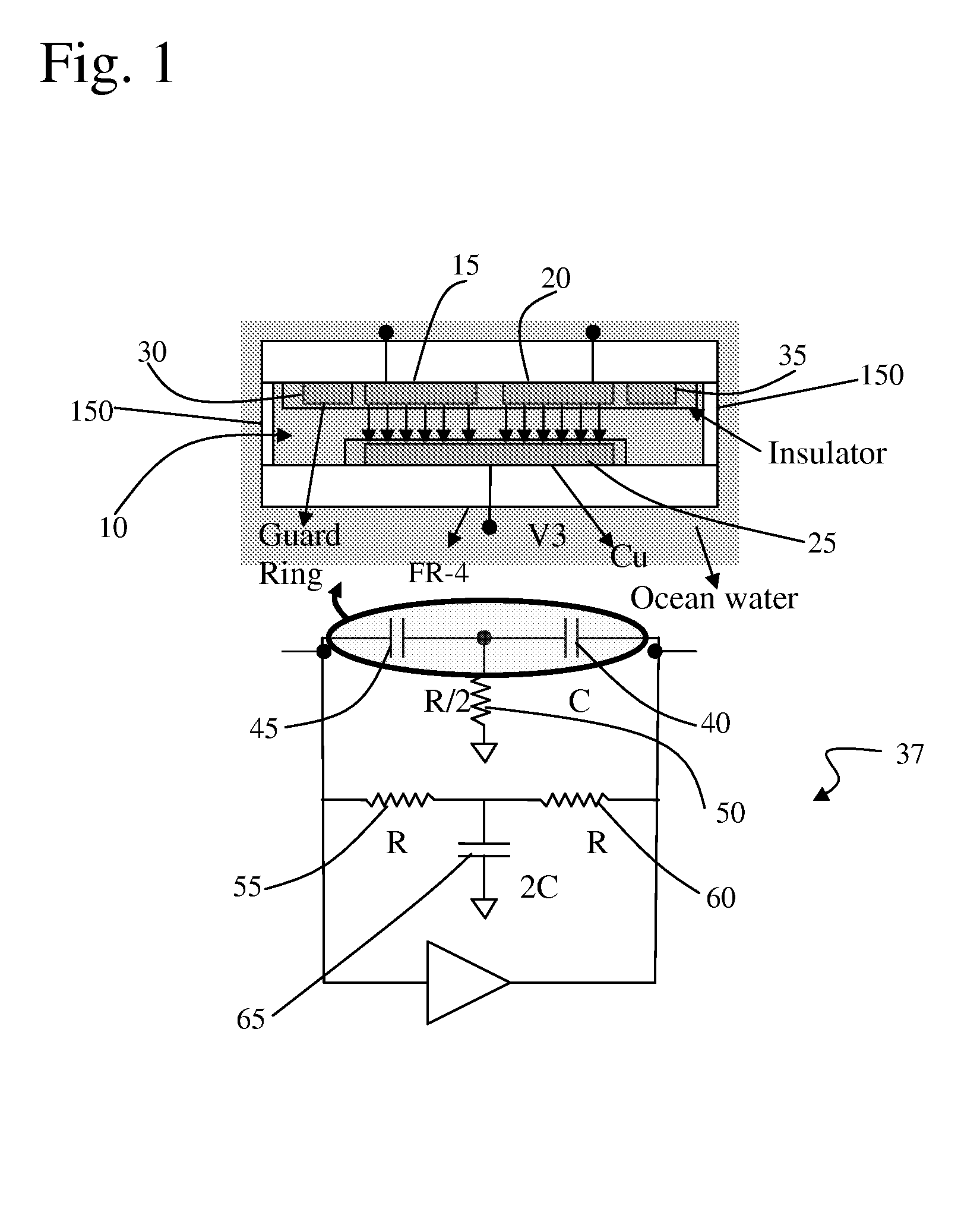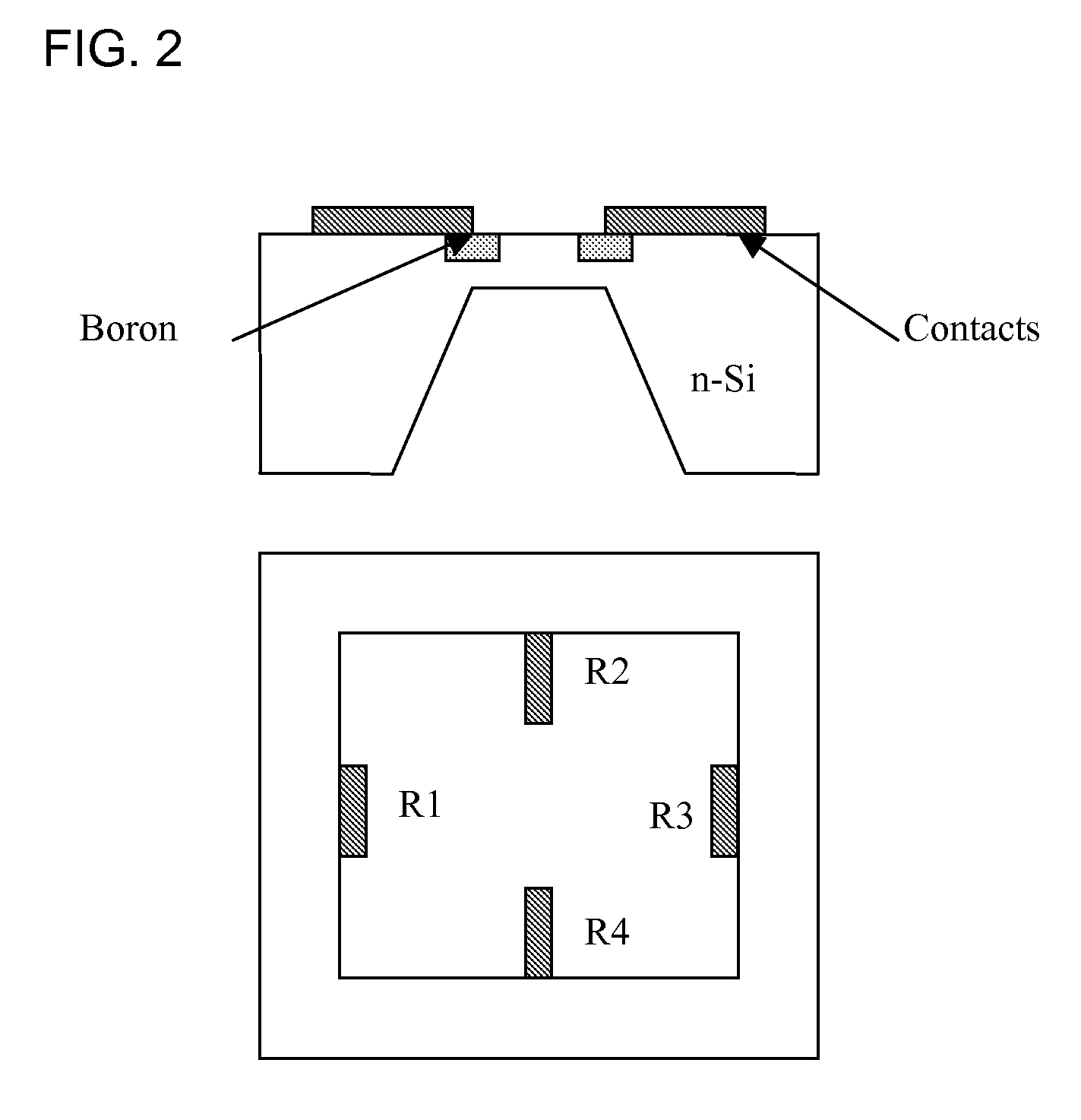MEMS based conductivity-temperature-depth sensor for harsh oceanic environment
a technology of conductivity and temperature depth, applied in the direction of instruments, heat measurement, reradiation, etc., can solve the problems of increasing the number of support vessels, adding a significant cost, and both have limitations
- Summary
- Abstract
- Description
- Claims
- Application Information
AI Technical Summary
Benefits of technology
Problems solved by technology
Method used
Image
Examples
Embodiment Construction
[0028]The all-silicon MEMS multi sensor consists of a capacitive based conductivity sensor, a gold doped temperature sensor and bulk micromachined piezoresistive pressure / depth sensor. These sensors are capable of operating over a wide dynamic range (0-500 m) with a resolution better than 1%. The advantages of using MEMS based silicon sensors are: 1) negligible creep and fatigue from hysterisis, 2) capable of integration and batch fabrication and 3) easily interface to electronic circuits.
[0029]A. Conductivity Sensor
[0030]Conventional conductivity sensors consist of toroidal coils for measurements. An inherent drawback of such system is the external field. A significant portion of the measuring field is external to the device and hence, any particle / field in the vicinity of the device tends to alter the measuring field resulting in measurement errors. The problem of external fields can be overcome by making use of a parallel two plate arrangement where the test specimen (ocean water...
PUM
| Property | Measurement | Unit |
|---|---|---|
| thick | aaaaa | aaaaa |
| thick | aaaaa | aaaaa |
| thick | aaaaa | aaaaa |
Abstract
Description
Claims
Application Information
 Login to View More
Login to View More - R&D
- Intellectual Property
- Life Sciences
- Materials
- Tech Scout
- Unparalleled Data Quality
- Higher Quality Content
- 60% Fewer Hallucinations
Browse by: Latest US Patents, China's latest patents, Technical Efficacy Thesaurus, Application Domain, Technology Topic, Popular Technical Reports.
© 2025 PatSnap. All rights reserved.Legal|Privacy policy|Modern Slavery Act Transparency Statement|Sitemap|About US| Contact US: help@patsnap.com



